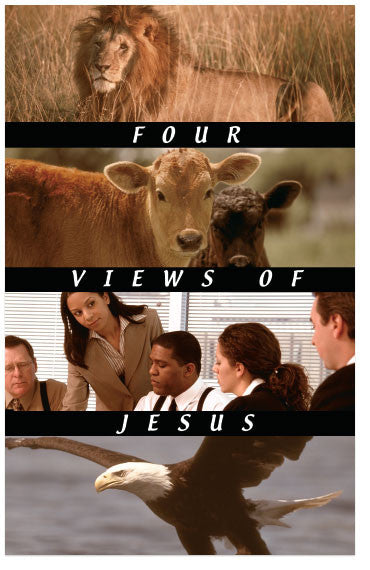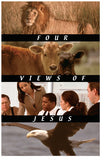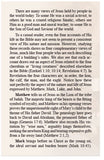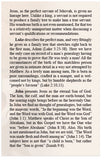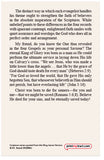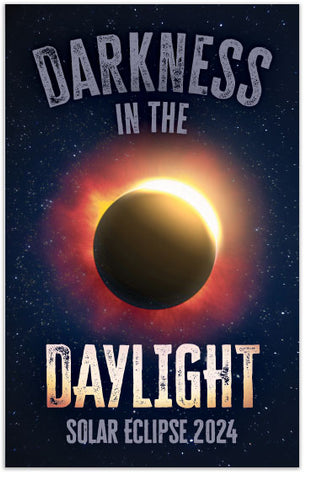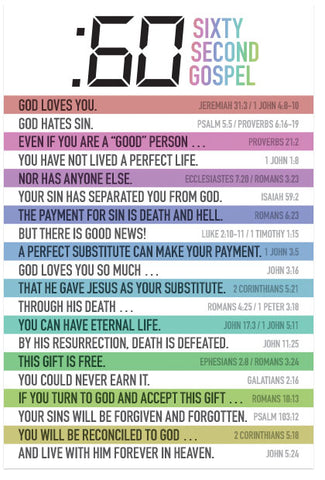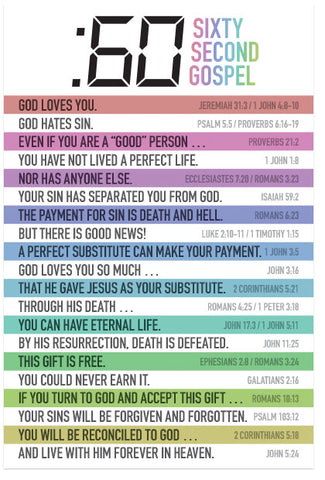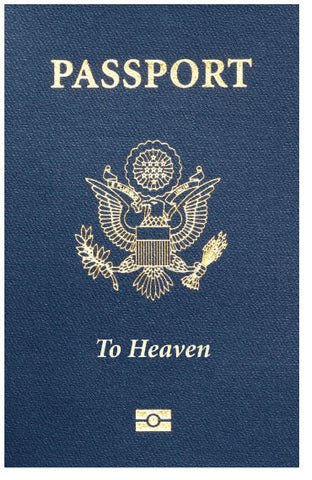Four Views of Jesus (KJV)
Special-Order Folded Tract
 NOTE: This item is custom-printed to order (click for more details).
NOTE: This item is custom-printed to order (click for more details).
This tract is from our print-on-demand library, and is not kept in stock. Select the options below, and we will custom-print a batch just for you. Because this item is custom-printed, you can add your custom imprint to the back page at no extra cost.
- Estimated shipping date: Tuesday, January 13 (Click for more details)
- SKU:
- Discounts: Discount coupons do not apply to this item
- Format: Folded Tract
- Size: 3.5 inches x 5.5 inches
- Pages: 4
- Imprinting: Available with 5 lines of custom text
- Version: KJV
- Returns: Because this item is custom-printed to order, it cannot be returned.
Show all item details
The full text of this tract is shown below in the KJV version. (Do you want to print this tract in a different version than the one listed? Contact us and let us know what you're looking for—we may be able to create the alternate version for you at no charge.)
There are many views of Jesus held by people in the world today. To some He was a social activist; to others he was a crazed religious fanatic; others see Him as a good man and moral teacher; to some He is the Son of God and Saviour of the world.
To a casual reader, even the four accounts of His life in the Bible may not seem to present a consistent view of His nature and mission. However, studying these records shows us four complementary views of Jesus, much like four people who are each describing one of a building’s sides. We also see that each account draws out an aspect of Jesus related to the four cherubim or “living creatures” described elsewhere in the Bible (Ezekiel 1:10; 10:14; Revelation 4:7). In Revelation the four characters are, in order, the lion, the calf, the man, and the eagle. Notice how these suit perfectly the aspect of the nature and life of Jesus expressed by Matthew, Mark, Luke, and John.
Matthew tells us of Jesus as the Lion of the tribe of Judah. The majestic king of the beasts is the fitting symbol of royalty, and Matthew in his opening verses proves the unquestionable right of Mary’s child to the throne of His father David. The genealogy here goes back to David and Abraham, the promised father of kings (Genesis 17:6). Matthew also records His visitation by “wise men,” arguably kings themselves, seeking the newborn King and bearing expensive gifts from a far-away land (Matthew 2:1,2).
Mark brings before us Christ as the young ox, the ideal servant and burden bearer (Mark 10:45). Jesus, as the perfect servant of Jehovah, is given no lineage here. Unlike a king, a servant is not required to produce a family tree to make him a true servant. His wondrous birth is not even mentioned, for that too is a relatively unimportant matter when discussing a servant’s qualifications or recommendations.
Luke describes the perfect man, and very fittingly he gives us a family tree that stretches right back to the first man, Adam (Luke 3:23-38). Here we have the only case on record of a man’s genealogy having to be given to prove that He was truly a man! All the circumstances of the birth of this matchless person are given in intimate detail in a way not attempted by Matthew. As a lowly man among men, He is born in poor surroundings, cradled in a manger, and is welcomed not by kings, but by humble shepherds as the “people’s Saviour” (Luke 2:10,11).
John presents Jesus as the eternal Son of God. The lion, the calf, and the man are earth-bound, but the soaring eagle brings before us the heavenly One. In John we find no thought of genealogies, but rather the majestic words, “In the beginning was the Word, and the Word was with God, and the Word was God” (John 1:1). Matthew speaks of Christ as the Son of Abraham, but in this Gospel we have the One who was “before Abraham” (John 8:58). Also, His birth is not mentioned in John, but we are told, “The Word was made flesh and dwelt among us” (John 1:14). The subject here is not that “a child is born,” but rather that the “Son is given” (Isaiah 9:6).
The distinct way in which each evangelist handles his theme ought to strengthen the faith of believers in the absolute inspiration of the Scriptures. While unbelief points to these differences in the four records with ignorant contempt, enlightened faith smiles with quiet assurance and worships the God who does all in perfect order and arrangement.
My friend, do you know the One thus revealed in the four Gospels as your personal Saviour? The eternal King of Glory was born as a man so He could perform the ultimate service in laying down His life on Calvary’s cross. “We see Jesus, who was made a little lower than the angels … that He by the grace of God should taste death for every man” (Hebrews 2:9). “For God so loved the world, that He gave His only begotten Son, that whosoever believeth in Him should not perish, but have everlasting life” (John 3:16).
Christ was born to die for sinners—for you and me—that we might be saved (Romans 5:6,8). Believe He died for your sins, and be eternally saved today!

